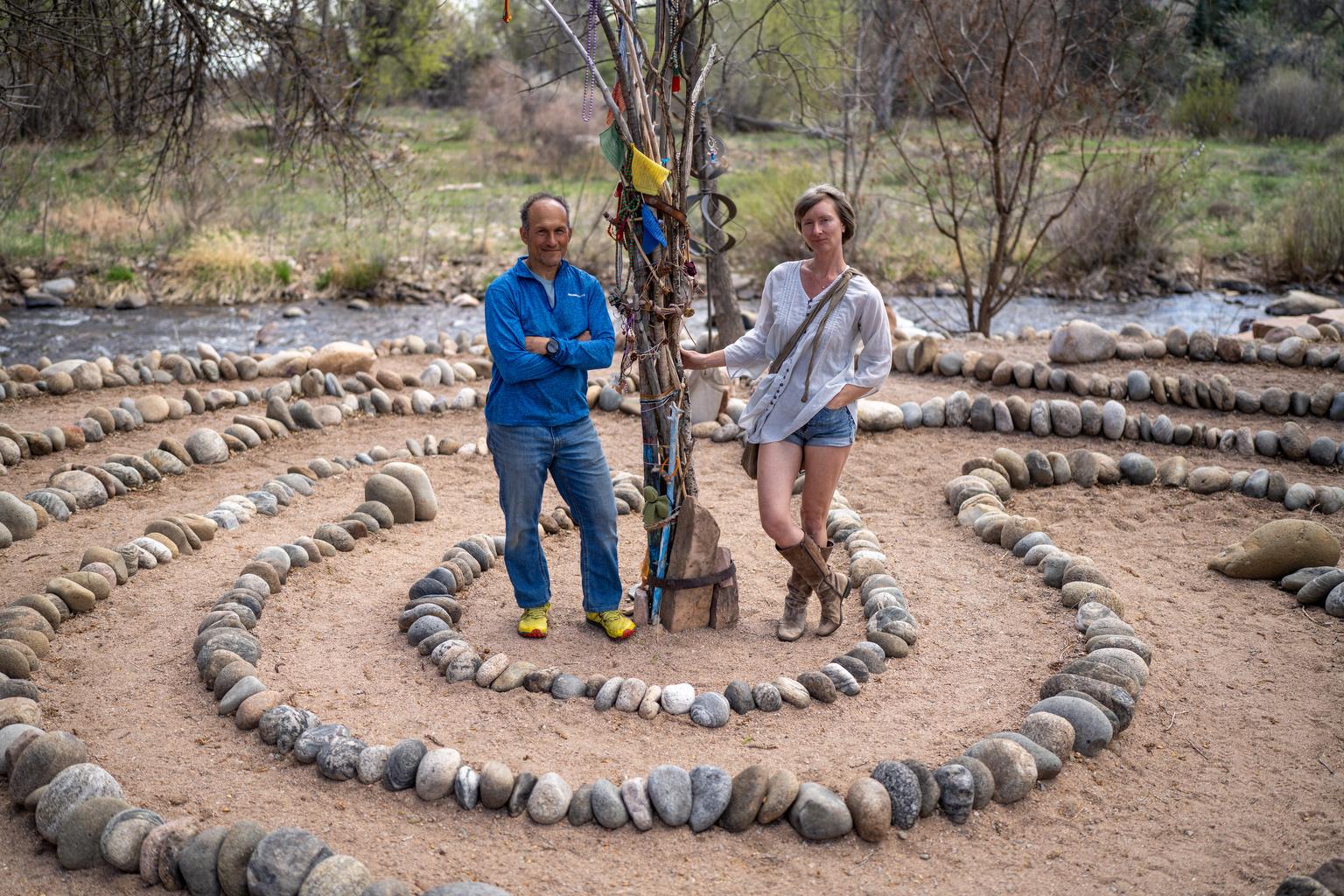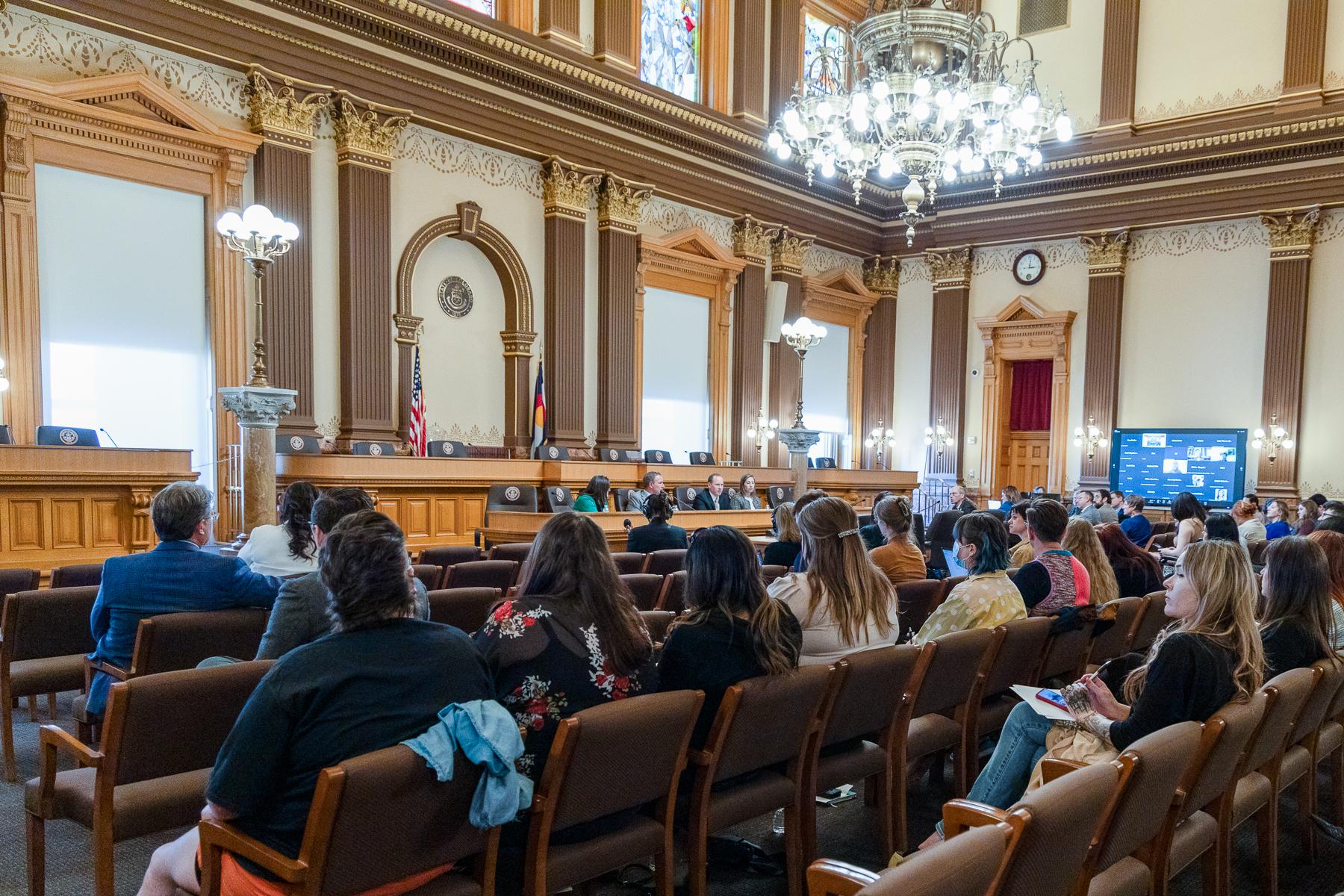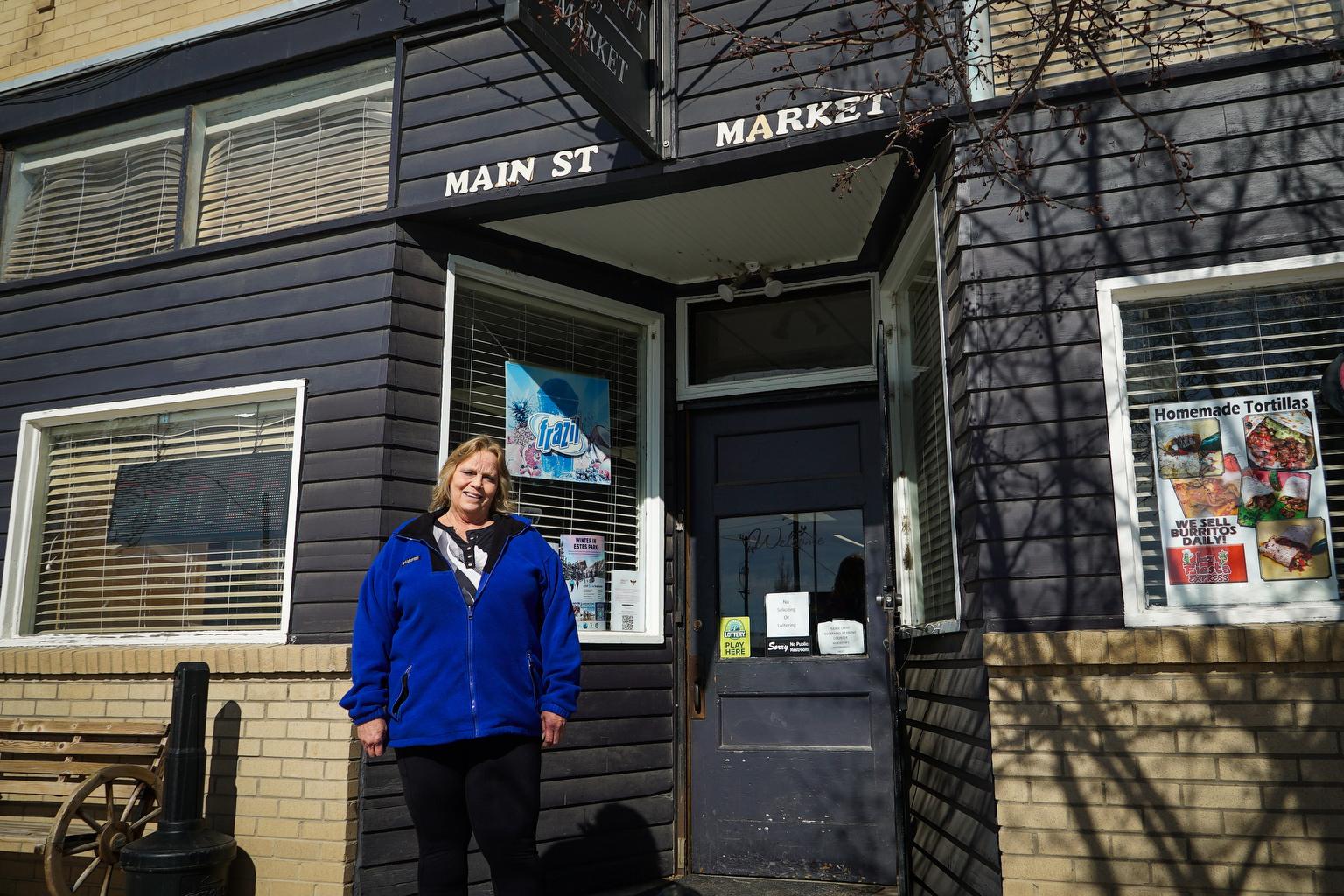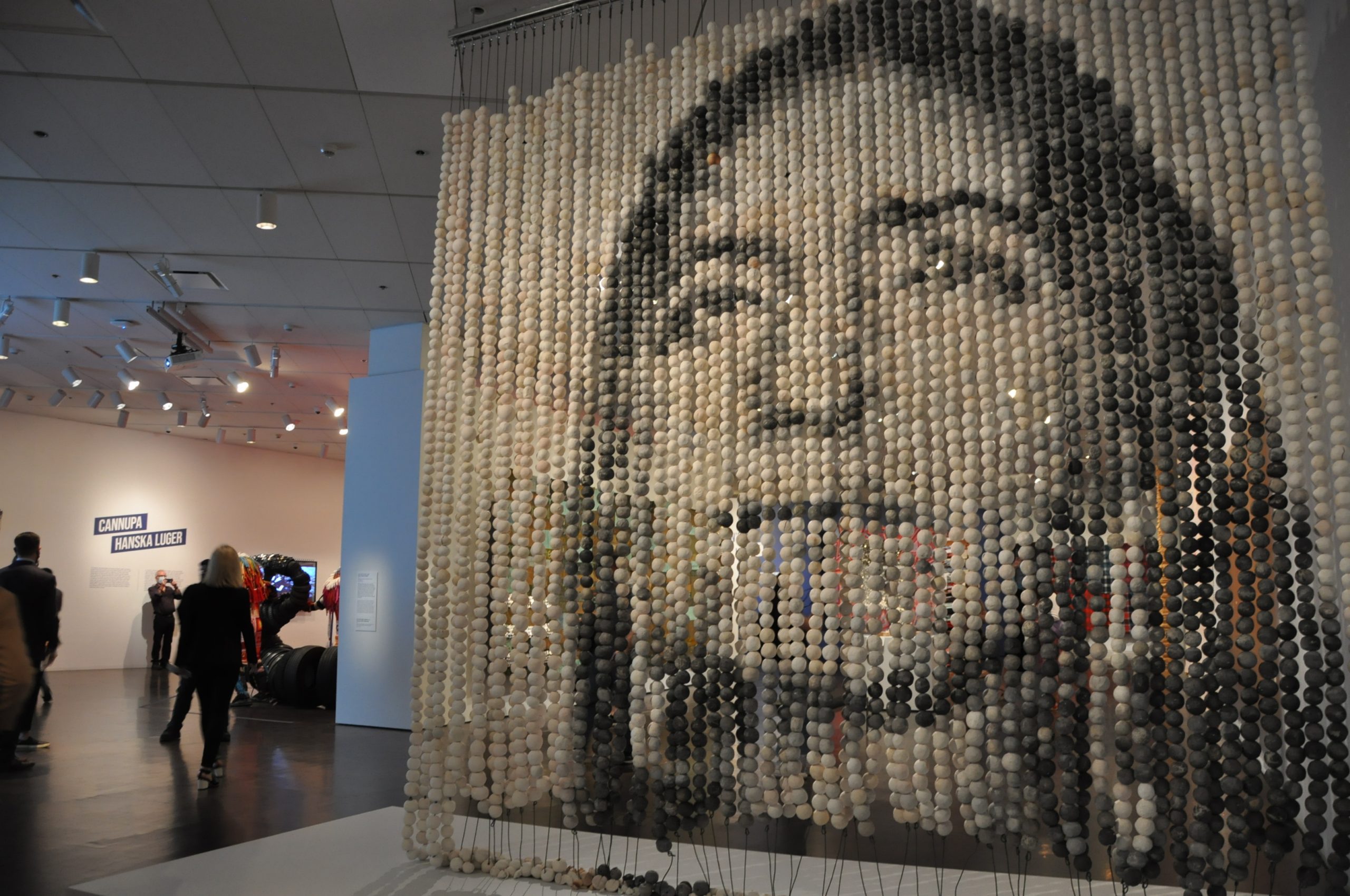
Stylistically speaking, Marie Watt and Cannupa Hanska Luger are very different Indigenous artists. Yet, the way each of them likes to include others in their work and design their pieces for collaboration has linked them together for a new exhibition and sculpture, both named “Each/Other,” now on display at the Denver Art Museum.
In her work, Watt explores the connections made in sewing circles as she orchestrates large quilt-like murals with the help of various participants.
“Originally, I might have thought that many hands make light work,” Watt said. “I would compare it maybe to a barn raising where you roll up your sleeves, help your neighbor, and invite your neighbors to help you. What I was really drawn to was what happens when your eyes are diverted and you're stitching and working with something as familiar as cloth and stories would flow.”
Another series, “Blanket Stories” explores the tales behind quilts as a way to explore memories. The towering quilts each have a story attached to them. Layered in between the folds of fabric of one of the newest towers of quilts collected during the pandemic are Watt’s thoughts about previous pandemics and their effects on Indigenous populations as well the influence of the AIDS memorial quilt.
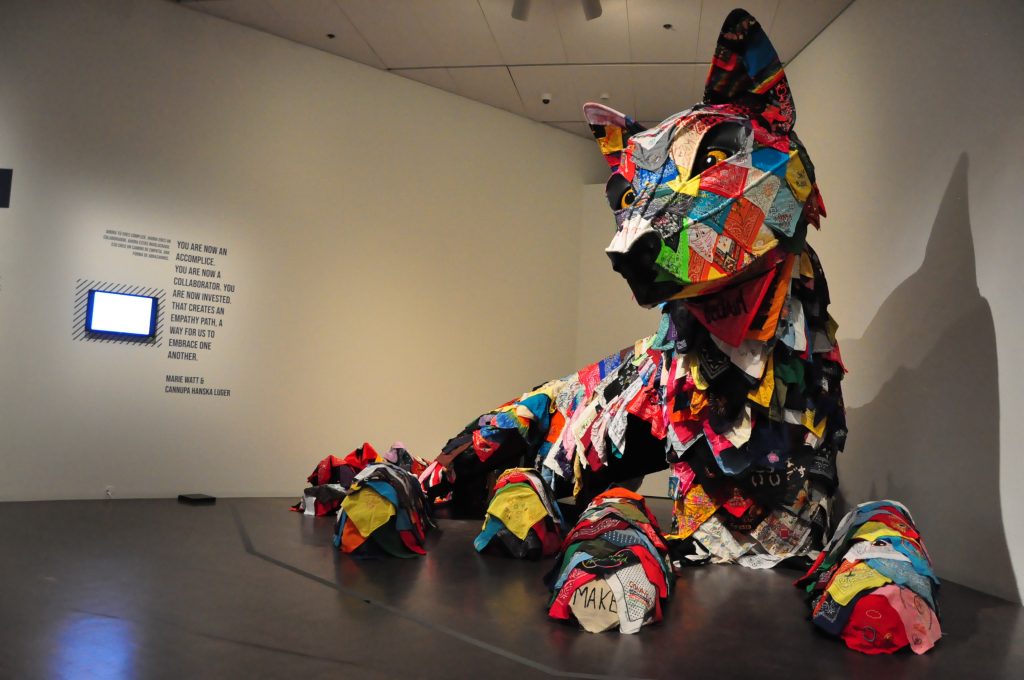
“I hope that this piece can be a touchstone for the stories that connect us, but also for the stories that aren't told in this particular sculpture,” Watt said. “Hopefully, it will allow and invite people to think about how blankets are storied objects in their lives and how we're constantly imprinting on them.”
Luger's work also taps into collaborative efforts, like his “Every One” portrait made of clay beads. He made a video teaching how to make a clay bead and sent it in for the project. The portrait is meant to symbolize the many indigenous women who have been murdered or missing, and each bead is a stand-in for the lives lost.
“It was an invitation to ask people to participate in building and generating empathy using the internet but also weaponizing my privilege as an artist and who has access to information and media groups,” Luger said. “I don't want to waste the privilege I have. The only way that I could think of doing that is to share with what I believe the art is, which is the making, not the object afterwards, but the process — because in that process, there was catharsis. You got to heal through knowing that your number counted.”
Some of Luger’s other works contemplate our connection to the land and the ways man has stripped the earth of its resources, like “Sweet Land Opera” and the series of sculptures “Nature,” “This Is Not A Snake,” “The One Who Checks” and “The One Who Balances.”
Yet, despite the differences in their processes and the final results of their practices, the two artists figured out how to work together to create “Each/Other,” a towering wolf-like participatory sculpture that resides at the end of the exhibition. The pair made a video call out for people to send in bandannas and fabrics, and from the crowd sourced material, made the large canine’s fur. They collaborated with others to weld and stitch the material together to make “Each/Other” come to life.
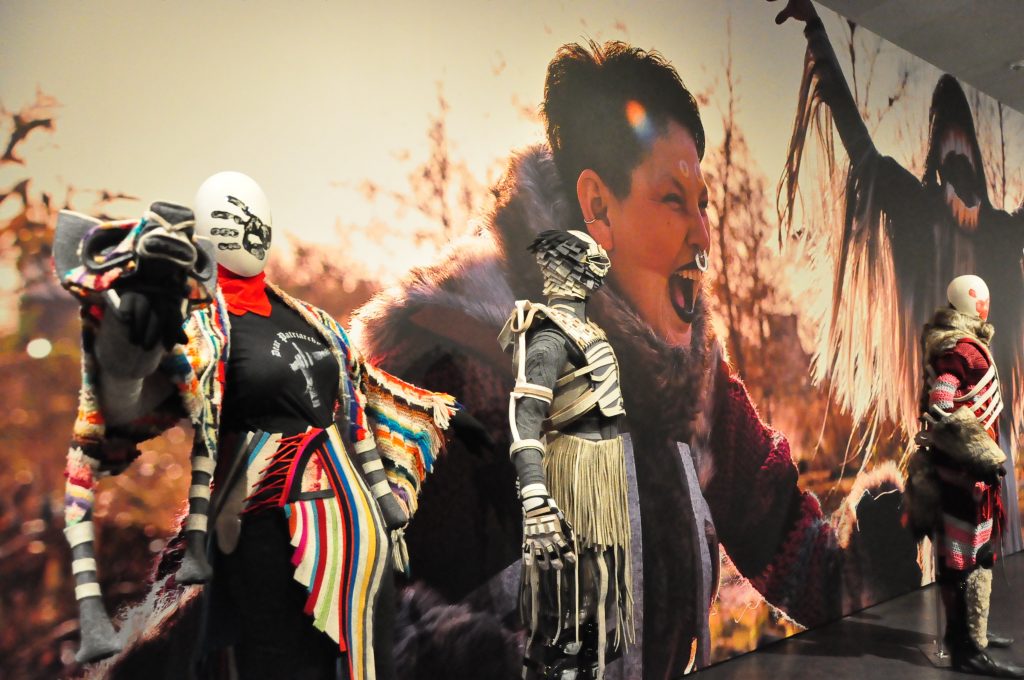
“I'm a native man, I grew up listening to my mothers and aunties and stuff like that. I was happy to be absolutely helpful,” Luger said. “That's so embedded in my cultural upbringing that I don't know how to avoid it. If I'm working with somebody I always defer to the matriarch and be helpful.”
Watt hopes visitors will see the collection as a reflection as different kinds of collaboration in art, including that between two artists. "I think sometimes there's this assumption that because I have a social practice and Cannupa has a community engaged practice, that it would just be natural for us to work together,” Watt said. “But it really was a process in which we grew to know one another."
The Each/Other exhibit runs at the Denver Art Museum through August 22.

